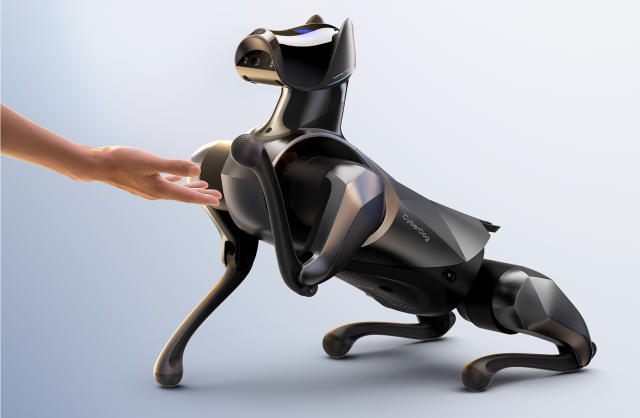Q2 net profit increased by 147%! Xiaomi: half of the employees are R & D personnel Self-developed car summer test has been completed
On August 29, Xiaomi released its 2023 second quarter results report。According to the data, Xiaomi's total revenue reached 67.4 billion yuan in the second quarter, down 4% year-on-year and up 13% from the previous quarter..2%。Adjusted net profit reached 5.1 billion yuan, up 147 percent year-on-year and 59 percent month-on-month.。
On August 29, Xiaomi released its 2023 second quarter results report。Performance data show that in the second quarter, Xiaomi's total revenue reached 67.4 billion yuan (RMB, the same below), down 4% year-on-year and up 13.2%。Adjusted net profit reached 5.1 billion yuan, up 147 percent year-on-year and 59 percent month-on-month.。Gross profit was 141.6.1 billion yuan, up 20% year-on-year.3%, up 22% month-on-month.2%。

Xiaomi's revenue fell year-on-year in the quarter, but its profit increased, which is closely related to the company's "scale and profit" business strategy.。In the second quarter, the Company's overall gross margin reached 21.0%。Among them, the smartphone business (as a percentage of total revenue of 54.3%) has a gross margin of 13.3%, up 4.7 percentage points。The gross margin of the IoT and consumer products business (33% of total revenue) was 17.6%, up 3% YoY.3 percentage points。
Xiaomi continues to insist on reducing costs and increasing efficiency。On the one hand, the company's expenses declined steadily。In the second quarter, the Group's overall expenses were $10.2 billion, down 2.3%。Cost of sales also declined year-on-year to $53.2 billion, a decrease of 8.9%。On the other hand, the company continues to optimize inventory management and improve turnover efficiency.。In the second quarter, the Company's overall inventory amount was $38.5 billion, down 33.5%, the lowest water level in ten quarters。
Smartphone Shipments Bucking the Trend
Global smartphone market demand remained sluggish in the second quarter, with a year-on-year decline for the sixth consecutive quarter。According to Canalys data, global smartphone shipments fell 10% year-on-year in the second quarter..1%, down 4.3%。Among them, Xiaomi's shipments ranked third, second only to Samsung and Apple。But unlike Samsung and Apple, where both shipments and market share fell month-on-month, Xiaomi's shipments rose 8.3% to 32.9 million units, driving its market share up two percentage points to 13%。
According to Canalys data, in the second quarter, Xiaomi's smartphone shipments ranked in the top three in 51 countries and regions and in the top five in 61 countries and regions。In addition, Xiaomi's smartphone shipments in the European region rose to the second place, with a market share of 21.2%。Shipments in the Middle East rose to second place, with a market share of 17.1%。
Thanks to an increase in mobile phone shipments, Xiaomi's smartphone segment revenue was RMB36.6 billion in the second quarter, up 4.6%。Gross margin reached 13.3%, an increase of 8.7%。However, the company's average unit sales price (ASP) of smartphones fell 3.4% to 1,112.2 yuan。
Xiaomi continues to implement its mobile phone high-end strategy in the second quarter。According to third-party data, in the second quarter, Xiaomi's market share of smartphone sales in mainland China at a price of $4,000-6,000 increased by 6.2 percentage points to 12.7%; high-end smartphone sales increase as a percentage of overall smartphone sales 3.3 percentage points to 20.1%。Xiaomi's ASP in mainland China grew by more than 24% year-on-year in the second quarter.。
It is worth noting that offline is still an important sales channel for high-end models.。According to third-party data, Xiaomi contributed more than 46% of its high-end smartphone sales in mainland China in the second quarter from offline channels.。

IoT and consumer products and Internet services perform well
In the second quarter, Xiaomi's IoT and consumer products segment revenue increased 12% year-on-year, driven by increased revenue from smart home appliances, tablets and a number of consumer products..3% to $22.3 billion, an increase of 32.2%。Gross margin rose in the same period and month-on-month, reaching 17.6%, a record high, compared to 14.3%, compared to 15 in the previous quarter.7%。
As of June 30, 2023, the number of connected IoT devices (excluding smartphones, tablets and laptops) on Xiaomi's AIoT platform reached 6.5.5 billion, up 24.2%。The number of users with five or more devices connected to the Xiaomi AIoT platform (excluding smartphones, tablets and laptops) reached 13 million, an increase of 27.8%。In June 2023, the number of monthly active users of Mijia APP increased by 17.1% to 82.9 million。
Among them, a variety of IoT and consumer products achieved good results in the second quarter.。
In the second quarter, Xiaomi's smart home appliance revenue grew by more than 70% year-on-year and more than 200% month-on-month.。This was mainly due to a significant increase of more than 90% in smart air conditioner shipments year-on-year, a record high in a single quarter。In addition, under pressure from most of the environment, Xiaomi's refrigerator and washing machine business grew against the trend in the second quarter, with shipments of refrigerator products exceeding 500,000 units and washing machine products exceeding 300,000 units.。
In the second quarter, Xiaomi's revenue from smart TVs and laptops decreased by 10% year-on-year..1% to $4.7 billion, up slightly from 0.7%。According to Ovie Cloud, in the first half of 2023, Xiaomi TV ranked first in the ranking of TV shipments in mainland China.。
On the tablet side, according to Canalys, Xiaomi achieved a year-on-year increase of more than 50% in shipments in mainland China in the second quarter, ranking third, driving a year-on-year increase in tablet revenue of 27.3%。In terms of sports and health equipment, according to Canalys data, in the second quarter, Xiaomi ranked first in TWS headset shipments in mainland China and second in wearable wristband device shipments.。
In the Internet services business, Xiaomi's Internet services revenue was $7.4 billion in the second quarter, up 6.8%, an increase of 5.9%, a record high。Gross margin reached 74.1%, up 1% YoY.1 percentage point, an increase of 1.8 percentage points。Among them, overseas Internet service revenue was 2 billion yuan, up 19.7%。Overseas Internet service revenue accounted for 26% of total Internet service revenue..8%, up 2.9 percentage points。
The segment's revenue growth was primarily driven by an increase in advertising revenue。In the second quarter, Xiaomi's revenue from both domestic and foreign effects and brand advertising hit new highs, driving the advertising business to revenue of 5.1 billion yuan, up 13.0%。
Xiaomi's global Internet user size maintained a healthy growth trend in the second quarter.。In June 2023, the number of monthly active users of MIUI worldwide reached 6.06 billion, up 10.8%。Among them, the number of monthly active users of MIUI in mainland China reached 1.4.9 billion, up 6.5%。In June 2023, Xiaomi's smart TV had more than 62 million monthly active users worldwide, up more than 18% year-on-year.。
In addition, Xiaomi's gaming business recorded revenue growth of 7.5% to 1 billion yuan, achieving 8 consecutive quarters of year-on-year revenue improvement。
Half of the company's employees are R & D personnel, and R & D spending will exceed 100 billion in the past five years.
In the second quarter, Xiaomi's R & D spending reached 4.6 billion yuan, up 21.0%。As of June 30, 2023, Xiaomi received a Super 3 worldwide.With 30,000 patents, the company has 16,834 R & D personnel, accounting for nearly 52% of the total number of employees.。In addition, Xiaomi plans to spend more than 100 billion yuan on research and development in five years (2022-2026).。
According to Xiaomi officials, the company has laid out 12 technology areas, 99 sub-tracks, and the future will be deep ploughing the underlying technology, long-term sustained investment, soft and hard deep integration, AI full empowerment.。
Among them, Xiaomi's alleged long-term investment in the underlying track has AI。Since 2016, the company has established and developed AI technology capabilities such as vision, speech, acoustics, knowledge graph, NLP5, machine learning, and multimodality.。In April this year, Xiaomi officially formed a large model team of AI laboratory。In terms of self-developed large-scale models, Xiaomi's self-developed large-scale model with 6 billion parameters ranked first in the C-EVAL authoritative list for the same parameter magnitude, and ranked first in the CMMLU Chinese to large-scale model.。Meanwhile, Xiaomi's intelligent voice assistant Xiao Ai has upgraded the big model and opened the invitation test。At present, Xiaomi has more than 3,000 related personnel in AI field.。
In addition to AI, robots are also one of the tracks where Xiaomi has invested heavily。In August this year, Xiaomi released a new generation of bionic quadruped robot CyberDog2 in mainland China, and equipped with self-developed CyberGear micro-motor and AI multi-modal fusion perception and decision-making system.。Xiaomi also mentioned that based on the continuous open source ecology, CyberDog2 will attract more developers to participate, and continue to promote the progress and improvement of bionic robots.。

Self-developed car production plan unchanged, how will Xiaomi price?
Xiaomi previously revealed that it will mass produce its self-developed cars in the first half of 2024, and as time approaches, Xiaomi's car-building status is getting more and more attention from the outside world.。
In its Q2 earnings report, Xiaomi said it spent $1.4 billion on innovative businesses including smart electric vehicles, up from $1.1 billion in the previous quarter.。At the phone conference, Xiaomi Group President Lu Weibing introduced that the actual investment in Xiaomi cars is even greater, Xiaomi is holding the goal of entering the world's top five in the future to do the long-term layout of the car, do full stack self-research, but also built its own car factory, so the cash flow investment is even higher than the disclosed figures.。He also revealed that Xiaomi has just finished the summer test, and the progress has exceeded expectations, maintaining the mass production target for the first half of 2024.。
Lu Weibing said the summer test, recently the Internet has been suspected of images in the circulation。
Last week, some netizens suspected of taking pictures of Xiaomi cars on the Urumqi-Changji Expressway in the Xinjiang Uygur Autonomous Region.。The footage shows that there are four Xiaomi test cars on the road, all wrapped up。The netizen who uploaded the photo also revealed the details of the Xiaomi car he found: equipped with yellow calipers and sharp edges of the interior center console。
In addition to the shape of the car, how Xiaomi will price its self-developed car is also a matter of concern to the outside world.。Recently, some netizens broke the news that Xiaomi's new car is expected to be priced in the range of $100,000 to $200,000.。And in this price range, there are currently many models on the market, such as BYD's Yuan PLUS and Seal, GAC AION S / Y, Nezha S, Zero Run C01, etc.。In addition, when Xiaopeng recently announced the acquisition of assets and R & D capabilities related to Didi's smart car development business, it also mentioned that it would build a Class A smart electric car priced at 150,000 yuan, which is scheduled for mass production in 2024, just like Xiaomi.。
While the outside world is talking about Xiaomi cars, Lei Jun shares its latest developments on Weibo, and the IP address shows that it is in Xinjiang。The photos released by Lei Jun contain several photos of the company team.。Through the photo, you can see that the banner pulled by the team members reads "Fight for Xiaomi cars."。

The slogan "Fight for Xiaomi Cars" Lei Jun once said。At the beginning of the announcement of the car, he said: "Xiaomi car is the last major entrepreneurial project in my life."。I am willing to bet on the whole reputation of my life, personally lead the team and fight for Xiaomi cars. "。At the beginning of this year, Lei Jun stressed again: "We must build the car well and never let everyone down."。"
It has been almost two and a half years since the official announcement of the car by Xiaomi in March 2021, and many changes have taken place in the Chinese car market during this period.。Regardless of the pricing of millet, will face very fierce competition。Xiaomi's killer will be the "high cost performance" shown at the beginning of the brand establishment, or will it be the same as the current Xiaomi mobile phone, attacking towards high-end?Everything is waiting for Xiaomi to reveal the answer next year.。
·Original
Disclaimer: The views in this article are from the original Creator and do not represent the views or position of Hawk Insight. The content of the article is for reference, communication and learning only, and does not constitute investment advice. If it involves copyright issues, please contact us for deletion.